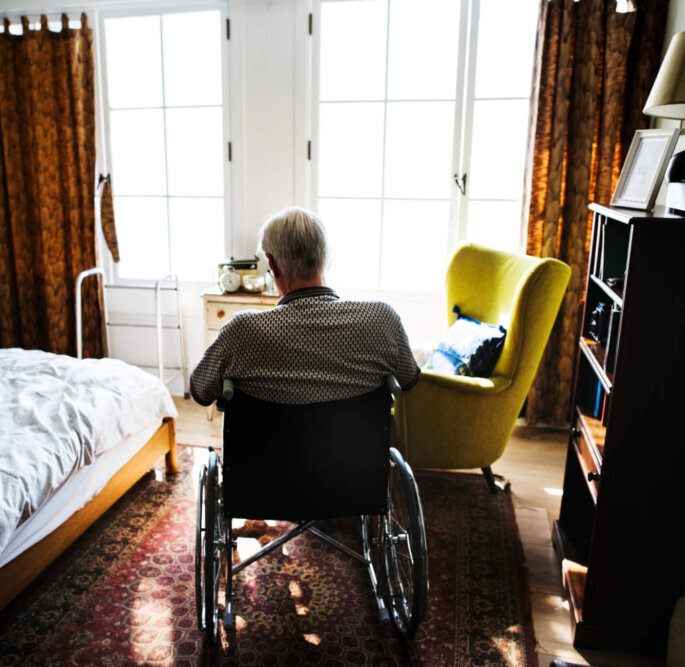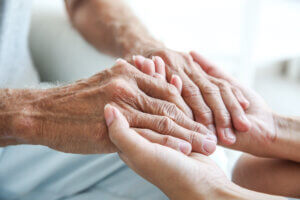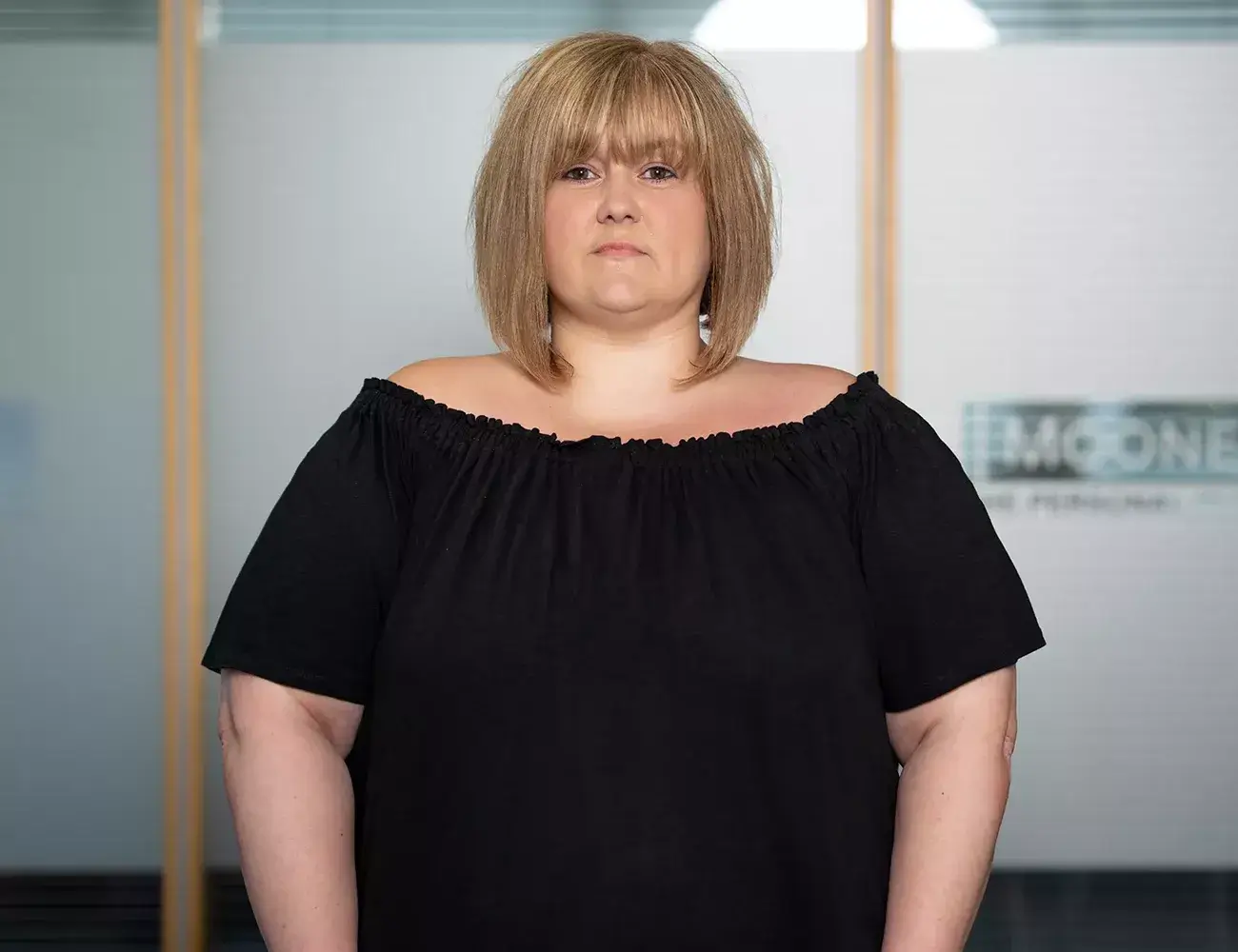Care Home Negligence Compensation Claims
Substandard care, neglect, or abuse of residents living in care homes can lead to injury, illness, or psychological trauma for those involved. When this happens, the injured resident can pursue a claim for compensation for care home negligence through an experienced firm of personal injury and medical negligence solicitors like Mooneerams Solicitors.
In this guide, we explain:
- What care home negligence claims are.
- The most common types of accidents or incidents that lead to a care home claim.
- The legal options available to the injured person.
What is Care Home Negligence
Care home negligence covers a wide range of circumstances in which the care home, its staff, or its management fail to meet the required standard of care, causing harm to one or more of its residents.
Substandard care presents itself in different ways, ranging from isolated incidents to systemic failures in care provision.
At its core, care home negligence occurs when the institution’s duty of care to its residents is breached. When care home staff breach this duty by failing to provide the standard of care the law expects of them, it may be possible to bring a care home negligence claim by or on behalf of the resident who has been harmed as a result of that negligence.
This duty requires care homes to provide a safe environment and meet the basic needs of their residents, including proper nutrition, hygiene, medical attention, and emotional support.
When these fundamental obligations are not met, and residents suffer as a result, there may be grounds for a care home negligence claim.
Examples of care home negligence can include:
- Failure to prevent falls or accidents due to inadequate supervision or safety measures
- Prescription errors, such as administering incorrect doses or the wrong medication.
- Neglecting the residents personal care needs, leading to medical conditions such as pressure sores or malnutrition
- Inadequate staffing levels result in below-par care or oversights
- Failure to properly assess and address residents’ medical needs
- Abuse of residents by staff members. This abuse can be of a physical or psychological nature.
It’s important to say that not all accidents or unwanted incidents in care homes constitute negligence. The key factor is whether the level of care provided fell below the reasonable standard expected of a competent care facility and whether this directly led to harm or suffering for the resident.
Common Types of Care Home Negligence Claims
There are many ways in which a care home’s poor standard of care may give rise to a care home negligence claim. Here are some of the more common ones:
1. Slips Trip and Fall accidents
One of the most frequent types of claim involves injuries sustained from slip, trip and fall accidents at the residential home.
Elderly residents are often at higher risk of falls due to mobility issues, medication side effects, or mental impairments. Care homes are responsible for carrying out risk assessments and implementing appropriate preventive measures where faults or hazards are found.
Negligence claims may arise when:
- Risk assessments are inadequate or not regularly updated
- The right mobility aids aren’t provided, or they haven’t been properly maintained.
- Environmental hazards, such as wet floors or poor lighting, are not addressed
- Staff fail to respond promptly to calls for assistance
2. Pressure Sores and Skin Breakdown
Pressure sores ( bedsores), or pressure ulcers, can develop when residents with limited mobility are not regularly repositioned or provided with appropriate pressure-relieving equipment. These painful and potentially dangerous conditions are usually preventable with proper care. A medical negligence claim may be pursued if:
- Staff fail to implement regular repositioning plans
- Pressure-relieving mattresses or cushions have not been provided
- Staff fail to spot early signs of skin breakdown, which, as a result, are not recognised and addressed promptly
- Wound care is inadequate and/or inconsistent
3. Medication Mistakes
A flawless system of medication management is required in care homes, where residents often rely on receiving more than one kind of medication.
Staff errors in providing residents with the wrong type of medication or an incorrect dosage can have catastrophic effects.
Medical negligence claims resulting from medication errors often involve:
- Administering the wrong medication or incorrect dosage
- Failing to know how a given resident interacts with a particular drug or has allergies to certain medicines.
- Inadequate monitoring of the side effects of particular drugs.
- Poor record-keeping leads to doses not being provided or, conversely, duplicate administration.
4. Malnutrition and Dehydration
Ensuring residents receive enough to eat and drink and a balanced diet is a fundamental part of a care home’s responsibilities. Sadly, sometimes patients are not fed enough or given enough to drink and they become ill as a result. Care home claims due to malnutrition or dehydration may arise when:
- Dietary needs and restrictions are not adequately assessed or followed.
- Assistance with eating and drinking is not provided when needed.
- Signs of malnutrition or dehydration are overlooked or ignored.
- Food and fluid intake is not sufficiently monitored and recorded.
5. Inadequate Medical Care
While care homes are not hospitals, they are expected to provide a certain level of medical care and to recognise when residents require additional medical attention. Medical negligence claims in this area might involve:
- Failure to notice and respond to changes in a resident’s condition
- Delays in seeking medical intervention when needed
- Inadequate management of chronic health conditions
- A lack of effective communication about the resident’s medical condition between the care home staff and healthcare providers or family members
6. Abuse and Neglect
Suffering care home abuse or learning that your loved one has been a victim of such abuse, whether sexual, physical, emotional or psychological, is horrifying. Making a care home claim not only secures the care home negligence compensation you need to fund your rehabilitation and recovery but can also prevent the perpetrators from causing pain and suffering to others too.
Claims of this nature often involve:
- Physical assault or rough handling of a resident by staff
- Emotional abuse of a resident, by means of enforced isolation, removing a resident’s mobile phone, treating the resident in a patronising or infantile manner
- Financial abuse: theft or attempted theft of money or property by a care home worker
- Severe neglect that leads to significant deterioration in health or quality of life
Identifying Signs of Care Home Negligence
Signs of abuse by care home staff might seem evident if there are signs of injury to the resident but others can be more subtle and easily overlooked. Family members, friends, and visitors play a vital role in monitoring the well-being of care home residents and identifying potential problems.
Here are key signs to watch for:
Physical Indicators
- Unexplained bruises, cuts, or other injuries
- Rapid weight loss or other signs of malnutrition
- Dehydration symptoms such as dry mouth, sunken eyes, or confusion
- Pressure sores or other skin blemishes
- Poor personal hygiene or unkempt appearance
- Frequent falls or accidents
Behavioural Changes
- Sudden withdrawal or depression
- Increased anxiety or agitation, especially around certain staff members
- Uncharacteristic aggression or combativeness
- Reluctance to speak in the presence of care home staff
- Changes in sleep patterns or appetite
Environmental Concerns
- Unsanitary living conditions
- Lack of appropriate mobility aids or safety equipment
- Inadequate heating, cooling, or ventilation
- Poor lighting or trip hazards in living areas
- Insufficient staff presence or supervision
Medical and Care Issues
- Medication errors or unexplained changes in medication regimes
- Worsening of chronic conditions without apparent cause
- Delays in receiving medical attention for new or existing health issues
- Lack of proper assistance with daily living activities
- Inconsistent or inadequate pain management
Staff Behaviour and Attitudes
- Dismissive or disrespectful treatment of residents
- Failure to respond promptly to calls for assistance
- Lack of engagement or interaction with residents
- High staff turnover or frequent use of agency staff
- Resistance to family involvement or questions about care
Documentation and Communication
- Incomplete or inaccurate medical records
- Reluctance to share information about the resident’s condition or care
- Inconsistencies between staff reports and observed conditions
- Lack of a clear care plan or regular assessments
The presence of any of these signs does not necessarily mean there’s been negligence, as there may be legitimate explanations. However, where there have been a number of issues they should be taken seriously and investigated further.
If you observe any concerning signs:
- Document your findings, including dates, times, and specific details
- Discuss your concerns with the care home management
- Seek input from the resident’s GP or other healthcare providers
- Consider involving social services or the Care Quality Commission if concerns are not adequately addressed. The CQC is responsible for ensuring care homes deliver the correct standards of care and adhere to various fundamental standards, including treating residents with dignity and respect and ensuring their health and safety. If they discover poor care standards, the CQC has multiple powers, including insisting the care home makes specific changes, limiting their registration, or prosecuting those responsible.
- Consult with a legal professional specialising in care home negligence if you believe there may be grounds for a claim
Family members and friends can play an important role in ensuring the safety and well-being of their relative in the care home and addressing potential negligence before it leads to serious harm.
Who can make a care home negligence claim?
The person who suffered the neglect in the care home will usually bring the care home negligence claim, provided they have the mental capacity to do so. This means that, while the injured person’s family can help them with aspects of their claim, such as gathering evidence and writing down their recollections, the injured person themself will be responsible for key tasks such as instructing solicitors and accepting any settlement offers.
However, if the loved one lacks the mental capacity to make a care home negligence claim, a family member can help, by applying o become the injured person’s ‘Litigation Friend’.
Getting appointed by the court to become a litigation friend is fairly straightforward. It involves filing a document called a ‘certificate of suitability’ at court. The Court will check the person applying to be the Litigation Friend is a suitable person whose interests do not conflict with the injured person’s, and they are capable of making decisions fairly and competently. The litigation friend will often be the son, daughter or sibling of the injured person. They will in effect do all the things the injured person would if they had the capacity to do so. For example, they’ll hire solicitors to act in the case and provide them with instructions, attend meetings, and deal with any correspondence related to the case.
How much compensation will I receive for my care home negligence claim?
The potential types of care home neglect are wide-ranging, and the impact on their victims varies. As a result, it’s impossible to say with any certainty how much compensation you’ll receive until our personal injury solicitors have reviewed your case. Once we’ve done so, we’ll be able to advise you on the level of compensation you can expect.
Compensation for care home neglect isn’t only essential in assisting your recovery from the neglect or abuse you have suffered; by holding those responsible to account, you can help ensure standards within the care home are improved and, hopefully, reduce the likelihood of someone else having to endure the pain and suffering you have gone through.
Do you do No Win No Fee care home negligence claims?
At Mooneerams, we’re committed to ensuring that anyone suffering from care home neglect receives the compensation they deserve. That’s why we act for most clients bringing care home negligence claims on a no win, no fee basis.
Our No Win No Fee agreements mean you can bring your care home compensation claim without financial risk. If you win your case, you pay us the amount detailed in your agreement. If you lose, you pay us no legal fees.
Is there a time limit for making a care home negligence claim?
You generally have three years from the date of the care home negligence to make a claim. If your injury was not immediately apparent, the three-year deadline might not start running until your date of knowledge.
If you believe you may have cause to bring a care home negligence claim, you should seek legal advice as soon as possible. Your priorities will be ensuring your safety or the safety of your loved one and seeking the medical help you or they need.
However, once you’ve done that, the sooner you enlist the help of a solicitor, the better. That way, we can gather the evidence we need while it is still readily available and get the ball rolling to secure the compensation you need to support your recovery.
Call Mooneerams solicitors on 029 2199 1927 to speak with one of our experienced medical negligence team.






















